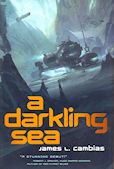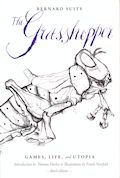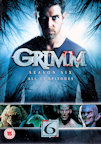Object-Oriented Ontology: a new theory of everything.
Pelican. 2018
It may just be old age getting to me, but I’ve been reading more books and papers with a philosophical bent lately. In particular, I’ve been reading about process philosophy, a way of capturing the essential dynamism of the world in general, and biology in particular. So when I saw this title, I thought it might make an interesting counterpoint to that reading.
The topic is summarised as follows:
[p9] Some of the basic principles of OOO, to be visited in detail in the coming chapters, are as follows: (1) All objects must be given equal attention, whether they be human, nonhuman, natural, cultural, real or fictional. (2) Objects are not identical with their properties, but have a tense relationship with those properties, and this very tension is responsible for all of the change that occurs in the world. (3) Objects come in just two kinds: real objects exist whether or not they currently affect anything else, while sensual objects exist only in relation to some real object. (4) Real objects cannot relate to one another directly, but only indirectly, by means of a sensual object. (5) The properties of objects also come in just two kinds: again, real and sensual. (6) These two kinds of objects and two kinds of qualities lead to four basic permutations, which OOO treats as the root of time and space, as well as two closely related terms known as essence and eidos. (7) Finally, OOO holds that philosophy generally has a closer relationship with aesthetics than with mathematics or natural science.Some of that sounds sensible, some is surprising, and some is confusing; but this is only the introductory summary, and more explanation comes later. There are some interesting comments on emergence:
[p31] predictability is not even the point, since even if we could predict the features of all larger entities from their ultimate physical constituents, the ability to predict would not change the fact that the larger entity actually possesses emergent qualities not found in its components.But this is is a philosophy of objects: so just what is an object?
[p43] OOO means ‘object’ in an unusually wide sense: an object is anything that cannot be entirely reduced either to the components of wh1ch it is made or to the effects that it has on other things.That definition seems a little circular: it is defined in terms of its components and of other things, both also presumably objects? However, such circularity is possibly necessary in a self-referential, non-reductionist, nonwellfounded world, which is how I got into process philosophy in the first place.
[p51] ‘object’ simply means anything that cannot be reduced either downward or upward, which means anything that has a surplus beyond its constituent pieces and beneath its sum total of effects on the world.
So far, so interesting. But then we move on to chapter 2: Aesthetics is the Root of All Philosophy. It starts off fairly clearly:
[p61] The previous chapter criticized most ‘theories of everthing’ for displaying four basic defects: physicalism, smallism, anti-fictionalism and literalism. At this point I hope mat most readers will agree that a theory of everything should be able to give an account of non-physical entities (the esprit de corps of a winning football club) no less than physical ones (atoms of iron). Perhaps most will agree as well that mid- to large-sized entities (horses, radio towers) need to be taken as seriously as the possibly tiniest entities (the strings of string theory). Finally, a good number of readers may also agree that a theory of everything should have something to say about fictional entities (Sherlock Holmes, unicorns) rather than simply eliminating them in favour of a discussion of their underpinnings (process, flux, neurons). Yet I suspect that the fourth point, OOO’s critique of literalism, will for many readers be the bridge too far.We then get an excursion into metaphor and poetry. Now, I’ve read my Lakoff and Turner, so thought I was relatively happy with these concepts. But I find the discussion here very opaque. And when I got to:
[p85] It would be more accurate, however, to say that in art the part of the image which looks towards the object is subordinated to our efforts, as basically thespian beings, to become the new object generated by the metaphor.which I read several times and failed to extract any meaning whatsoever, I decided that this is indeed a bridge too far for me. I may come back to this book later, as I have found several interesting ideas so far. But for now, I bounced off it at p85.
For all my book reviews, see my main website.

























